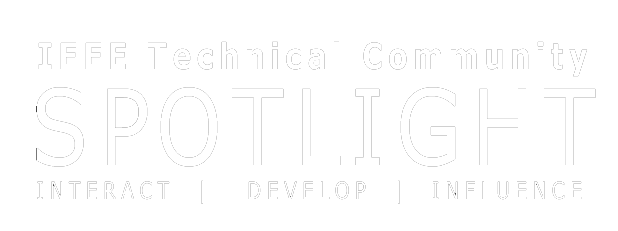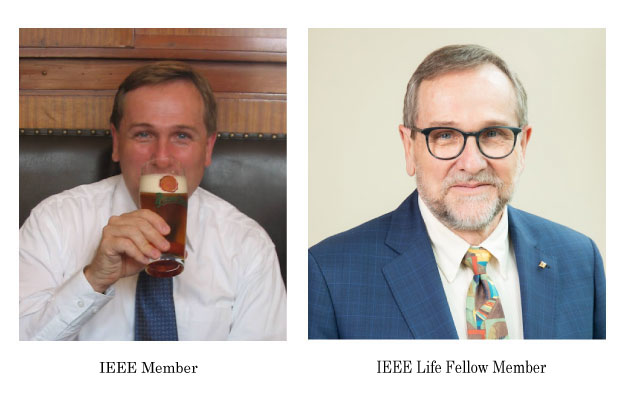 “I’m not in the business just to sell as many [cameras] as possible. I want to provide as much value as possible,” urges Narrative Clip creator Martin Kallstrom (interviewed by Marc Langheinrich and Nigel Davies) in the July-September 2015 issue of IEEE Pervasive Computing, the IEEE Computer Society’s publication delivering the latest peer-reviewed developments in pervasive, mobile, and ubiquitous computing to those who want to keep abreast of rapid technology change. Kallstrom, after losing both parents to cancer, was looking for an entrepreneurial business venture and was “grabbed” by the possibility of creating a wearable camera which would allow him to “fill in the gaps and capture everyday moments without consciously deciding to capture them in photos.” Surpassing the limited scope that the traditional camera could offer was key in development of the tiny wearable, which was created following a successful 2012 Kickstarter campaign that raised over half a million US dollars more than its original funding goal of $50,000.
“I’m not in the business just to sell as many [cameras] as possible. I want to provide as much value as possible,” urges Narrative Clip creator Martin Kallstrom (interviewed by Marc Langheinrich and Nigel Davies) in the July-September 2015 issue of IEEE Pervasive Computing, the IEEE Computer Society’s publication delivering the latest peer-reviewed developments in pervasive, mobile, and ubiquitous computing to those who want to keep abreast of rapid technology change. Kallstrom, after losing both parents to cancer, was looking for an entrepreneurial business venture and was “grabbed” by the possibility of creating a wearable camera which would allow him to “fill in the gaps and capture everyday moments without consciously deciding to capture them in photos.” Surpassing the limited scope that the traditional camera could offer was key in development of the tiny wearable, which was created following a successful 2012 Kickstarter campaign that raised over half a million US dollars more than its original funding goal of $50,000.
What do you think?
Wearable cameras enable life logging.
IEEE Collabratec sign up is free using your IEEE Account.
Kallstrom hopes that his device, as well as others, will allow for a new sort of memory bank, and is exploring the legality and related technicalities of transferring access of photos from one user to another. He says, “What I would like to implement is for users to be able to say that if they don’t access their account in a certain amount of time, then this relative can access the data, or if that relative presents a death certificate, then we can transfer access.” He describes the ideal end goal for him: “I would love for people in the future – 30 to 50 years from now – to know that they can go back in time to explore their relatives’ past lives, as well as their ancestors’ lives.” Kallstrom fully believes that his company can achieve this sort of goal.
With Kallstrom’s good intentions come a dilemma, however. In a time when introduction of devices such as the GoPro and Google Glass have been met with skepticism, the pervasiveness of wearable cameras and recording devices can’t be ignored. Inevitably, the subject of recording other individuals who may not consent to such an activity is one wrought with controversy. According to the interviewers, the GoPro “hasn’t had as much backlash” as other wearable devices, as “it’s clear that the user is recording a specific set of events, so it seems the perceived usage is important.” However, with the Google Glass, “It wasn’t always obvious how people were going to use the images or what Google might do with the images.” Kallstrom’s Narrative Clip follows a different model: “It always takes two decisions for a photo to become public.” Google Glass offers users the ability to stream video to a public-by-default Google Plus account. For the Narrative Clip to share photos, the user must first decide to wear the camera, and, once the photos have been viewed, make a conscious decision to share them.
Kallstrom is also exploring new search and tagging functions that will allow users to have greater control over photo-sharing. He would like to have a search function, in general, so that users can opt-in to receiving alerts from other users such as, “Does anyone have a photo from Stockholm on this date?” Then, Kallstrom says, “we can do an algorithmic search and ask users, ‘Would you like to share your photo with this user, who wants the photos for this purpose?’” Only as users opt in to sharing photos would results begin to pour in.
Currently, the only search feature for the Narrative Clip is located on the back end. “It isn’t exposed to users because we haven’t formulated a user search experience that we are satisfied with.” While looking for new ways to tag people – photos are currently tagged by location, which Kallstrom admits is not the most efficient way – the Narrative Clip team is learning toward implementing semantic tagging. “It is very hard to produce tagging that is intuitive to the users because it becomes so general.”
This saturation of image and generality of repeat exposure to places and objects (dogs, houses, cars, etc.) marks what is perhaps the biggest challenge to the evolution of wearable recording devices. Currently, on average, an active user uses the Clip five and a half days per month; during such a day, on average, an active user captures 568 photos – at two photos per minute, that would be about two and a half hours of wearing the Narrative Clip. Even using the Clip for such a seemingly short time per day leads to an overwhelming number of photos for the user to review. While it is possible for technologists to develop devices that have goals of capturing 24/7 video – perhaps the ultimate narrative documentation – Kallstrom urges this will be “very hard to consume.”
As the interviewers admit, “It’s a tradeoff. You don’t have another lifetime to look back at the video you captured. As the number of photos you take increases, then the summarization has to become more aggressive.” Kallstrom says, “The challenge [isn’t to] capture photos, but to provide value to the user after capture.”
What is the future of wearable devices such as the GoPro, Google Glass, or Narrative Clip? Is it possible to create a device that is less controversial than those in existence today? How can technologists fix the inherent dilemma present in capturing, cataloguing, and safely storing a virtually infinite number of images? Read the full interview for more information, and let us know in the comments!
Resource Links:





